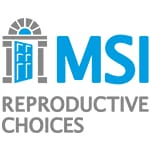Increasing Child Vaccination in Ethiopia Through Non-Monetary Rewards
HIGHLIGHTS
- Attempts to increase immunization rates in Ethiopia have largely focused—with limited success—on boosting awareness or motivating people through direct, financial incentives.
- We tested non-monetary solutions that track immunization achievement and drop-outs in a highly-visible way, solidifying caregiver intentions and enabling timely health worker follow-up.
- These results suggest that similar approaches hold promise for addressing coverage and immunization gaps.
The Challenge
In Ethiopia, despite progress in the availability of vaccines, few children receive all of the recommended immunizations. In 2016, only 39% of Ethiopian children 12-13 months old were fully immunized, with even lower rates (22%) among the poorest families in the country.
Attempts to increase immunization rates have largely focused—with limited success—on boosting awareness or motivating people through direct, financial incentives. In collaboration with MSI Ethiopia and Zerihun Associates, we explored whether non-monetary rewards and signals provided to frontline health extension workers and caregivers would lead to improved child immunization rates.
Our Approach
We leveraged behavioral design to increase vaccine uptake for young children in Ethiopia, recognizing that even families that are aware of services and motivated to protect their children may need support to follow through on their intentions to receive vaccines. Through conversations with health workers and caregivers of young children, we found three primary causes of immunization drop-out:
- Few caregivers knew if other children in the area were receiving all immunizations.
- The benefits of immunization were diffuse and not easy to observe.
- Most caregivers intended to immunize their children but forgot.
These insights suggested that making immunization uptake more visible to others, offering immediate benefits through non-financial rewards for immunizing children, and enabling timely follow-up with families who fall behind could increase full immunization rates. These steps would support families to solidify their intentions to have their children vaccinated and to follow through even in the face of inconveniences.
Together with our partners, we designed Protected Child Posters—displayed in health facilities and seen below—that use stamps to track immunization achievement and drop-outs in a highly-visible way to health workers and caregivers, enabling follow-up.
When a child is fully immunized, a completion symbol is placed on the poster, and the child’s caregiver is offered the same completion symbol to take home as proof of her achievement.
Results
Over an 18-month pilot period, the posters were actively used and filled with stamps and completion symbols. We observed a marginally significant increase in health worker outreach in communities receiving the intervention as compared to the control group. We also saw increases in certain vaccinations and decreases in immunization drop-out.
However, we did not detect statistically significant differences between vaccine completion in the treatment and control groups, possibly as a result of two factors during the study period: 1) an increase in vaccination rates for both the treatment and control groups, making it hard to parse out an additional impact from our intervention, and; 2) interruptions to health services and communication due to civil unrest.
More information on this study can be found here.
Takeaway
These results underscore the need for creative approaches to increase immunization rates. While our findings could not conclusively show that the Protected Children Poster and stamp system increased immunization coverage rates, they suggest that the approach holds promise as a low-cost intervention that can address coverage gaps by offering visible signals of immunization progress and enabling community health workers to target follow-up efforts to families who may need additional reminders and encouragement.
Interested in our work applying behavioral science to global health? Email gh@ideas42.org or tweet at @ideas42 to join the conversation.
Partners










